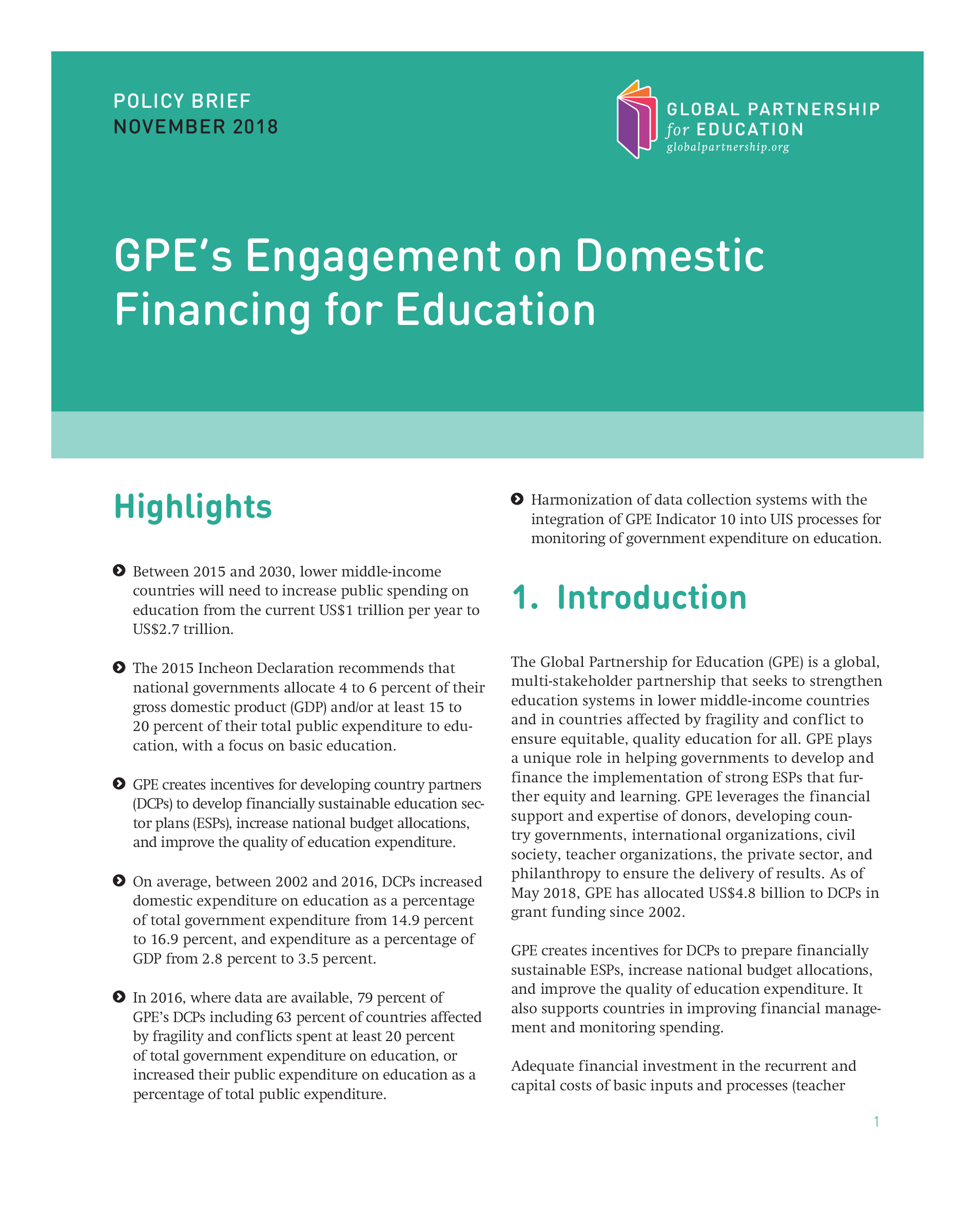Policy brief: GPE's engagement on domestic financing for education
November 01, 2018
Highlights
- Between 2015 and 2030, lower middle-income countries will need to increase public spending on education from the current US$1 trillion per year to US$2.7 trillion. The 2015 Incheon Declaration recommends that national governments allocate 4 to 6 percent of their gross domestic product (GDP) and/or at least 15 to 20 percent of their total public expenditure to education, with a focus on basic education.
- GPE creates incentives for developing country partners (DCPs) to develop financially sustainable education sector plans (ESPs), increase national budget allocations, and improve the quality of education expenditure.
- On average, between 2002 and 2016, DCPs increased domestic expenditure on education as a percentage of total government expenditure from 14.9 percent to 16.9 percent, and expenditure as a percentage of GDP from 2.8 percent to 3.5 percent.
- In 2016, where data are available, 79 percent of GPE’s DCPs including 63 percent of countries affected by fragility and conflicts spent at least 20 percent of total government expenditure on education, or increased their public expenditure on education as a percentage of total public expenditure.
- Harmonization of data collection systems with the integration of GPE Indicator 10 into UIS processes for monitoring of government expenditure on education.
